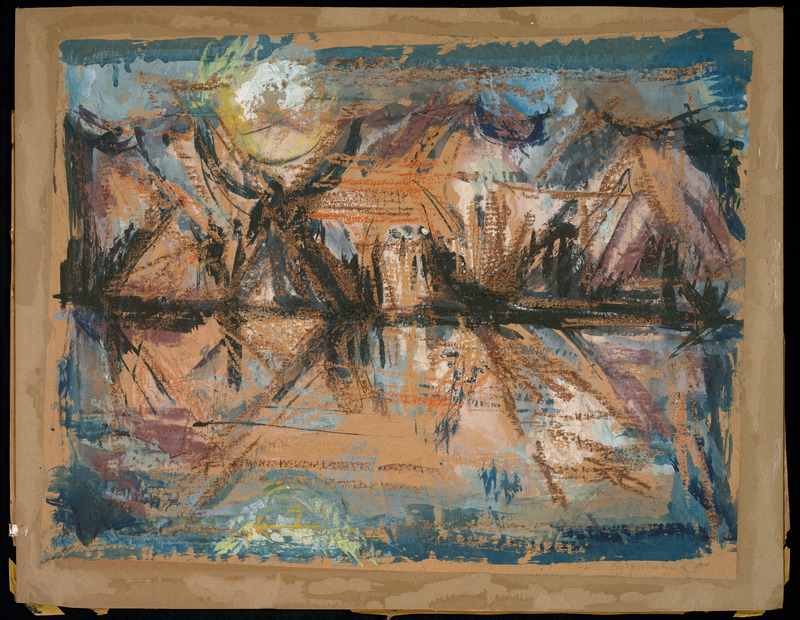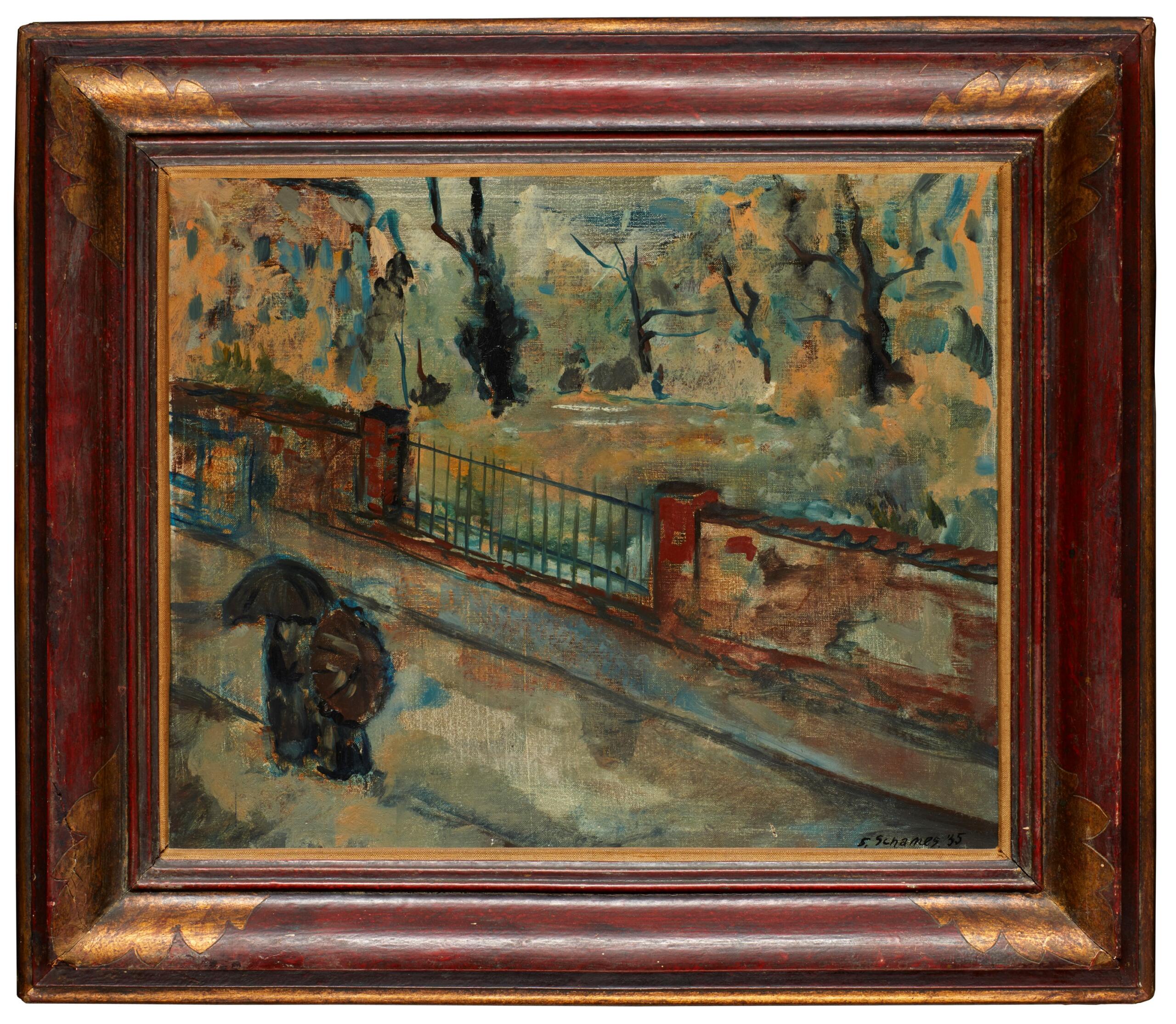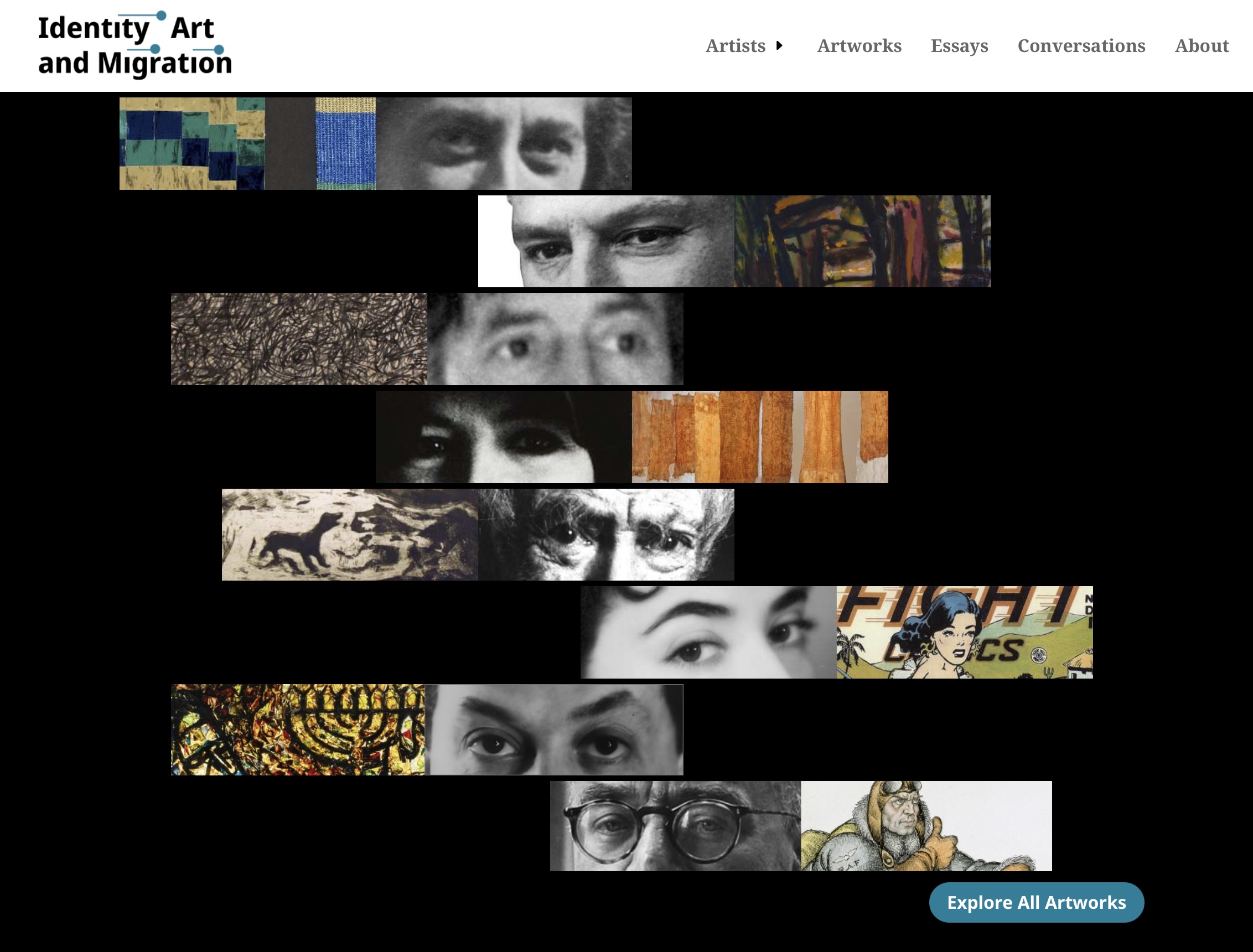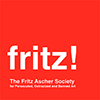

The Three Exiles of the German-born artist Samson Schames (1898-1967)
Conversation with Annika Friedman (Germany), Rachel Dickson, PhD (UK) and Ori Z Soltes, PhD (USA)
August 27, 2025 @ 12:00 pm - 1:00 pm
| FreeIn this virtual event, a transatlantic panel discusses the artist Samson Schames. Annika Friedman (Germany) elaborates on the artist’s beginnings in Frankfurt, Rachel Dickson, PhD (UK) gives an insight into the work he made in British exile, and Ori Z. Soltes, PhD (USA) speaks about the work he created in his new home, New York. The presentations are followed by a moderated discussion and Q&A.
Image above: Samson Schames, Granite Quarry No. 1, 1958. Casein on board, 20.75 in. x 26.25 in. Leo Baeck Institute New York 2007.97
Samson Schames was a German-Jewish artist born in 1898 in Frankfurt am Main, Germany, into a prominent Jewish family involved in the textile business. He initially trained in the decorative arts, studying at the Städelschule in Frankfurt and later in Berlin, where he became part of the dynamic Weimar-era art scene. Early in his career, Schames worked in painting and graphic design, often integrating Jewish themes and symbols into his work.

Samson Schames, Street in Autumn (Rothschildpark), 1935. Oil on cardboard, 15.94 x 18.1 in. Jewish Museum Frankfurt
After the National Socialists rose to power in 1933, Schames was only able to exhibit his works in exhibitions of the Jüdischer Kulturbund or in his own studio. In 1937, at least seven of his works were confiscated from public collections as part of the Nazi campaign against “Degenerate Art.”
Schames fled to England via Holland after the Kristallnacht pogroms of November 1938. In 1940 he was interned in Huyton Camp, near Liverpool, as a so-called ‘enemy alien’. During the London Blitz, Schames began creating mosaics using fragments of broken glass, pottery, and other debris from bombed buildings. These works, which he called “war mosaics,” were deeply symbolic—transforming destruction into artistic expression and becoming a means of processing trauma and displacement.

Samson Schames, Bombed House and Broken Wheel Barrow, 1941. Tempera and gouache with sand on paper, 22.44 x 15.35 in. Jewish Museum Frankfurt
In 1948, Samson and his wife Edith emigrated to the United States, settling in New York, where he continued to develop his art and also worked on commissions for synagogues and Jewish institutions, contributing significantly to postwar Jewish art and religious symbolism. He died in 1967, leaving behind a body of work that blends modernist aesthetics with spiritual and historical depth. Today, his art is recognized for its innovative technique and its poignant reflection on exile, memory, and identity.
This event is part of the online series Flight or Fight. stories of artists under repression.

Samson Schames, Boat Docked at Harbor, 1952. Gouache and ink on paper ; 10 x 13 in. Leo Baeck Institute New York 2023.126
Annika Friedman has been part of the Jewish Museum Frankfurt team since 2021, initially as curatorial assistant and since 2022 as the curatorial project manager for the permanent exhibition in the Rothschild Palais. In addition to “Samson Schames: Fragments of Exile” she most recently co-curated the 2022/23 exhibition Back into the Light. Four Women Artists – Their Works. Their Paths” which detailed the lives and careers of four artists whose paths intersected and subsequently diverged in Frankfurt after the rise of the National Socialists. She received her Master in Holocaust Studies at the University of Haifa in Israel and her Bachelor at University of British Columbia in Canada. During her studies she was the assistant curator of the art exhibition “Arrivals, Departures – The Oscar Ghez Collection,” and a project coordinator in the archives of the Hecht Museum (Haifa).
Rachel Dickson, PhD is Consulting Editor, Ben Uri Research Unit, formerly Head of Curatorial Services, Ben Uri Gallery and Museum, London (2011-2020). Her research and curatorial outputs focus primarily on Jewish émigré artists and designers in 20th-21st century Britain, particularly those who fled Nazi-occupied Europe. A committee member of the Research Centre for German and Austrian Exile Studies, School of Advanced Studies, University of London, and honorary advisor to The Archives of Polish and Eastern European Emigration, Nicolaus Copernicus University, Torun, Poland, she has written and spoken widely. In 2023 her biographical chapter on émigré art historian, Dr Helen Rosenau, was published in Griselda Pollock’s Woman in Art: Helen Rosenau’s ‘Little Book’ of 1944 (Paul Mellon Centre for Studies in British Art/Yale University Press), a publication which received the award for a multi-authored volume from the Historians of British Art in 2025.
Ori Z. Soltes, PhD, teaches at Georgetown University in Washington DC across a range of disciplines. He is former Director of the B’nai B’rith Klutznick National Jewish Museum. His most recent exhibition, co-curated with Rachel Stern, is Identity, Art, and Migration, which includes the work of Samson Schames. As co-founding Director of the Holocaust Art Restitution Project, he has spent twenty-five years focused on the issue of Nazi-plundered art. Soltes has authored or edited 31 books and scores of articles and exhibition catalogue essays. Recent volumes include The Ashen Rainbow: Essays on the Arts and the Holocaust and Tradition and Transformation: Three Millennia of Jewish art and Architecture.
Moderator Rachel Stern is the co-founder and Executive Director of the Fritz Ascher Society for Persecuted, Ostracized and Banned Art in New York.
In another recorded event, family members, friends, and their descendants share their memories of Samson and Edith Schames. A short film introduces the artist.
You can further explore Samson Schames’ art and life story in bio, recorded discussions and a scholarly essay by Annika Friedman from the Jewish Museum Frankfurt in our online exhibition IDENTITY, ART AND MIGRATION.
IDENTITY, ART AND MIGRATION investigates the experience of eight Jewish European artists who were forced to abandon their country of origin, or remain in hiding for years, in response to Nazi policies in effect from 1933 to 1945. These seven artists: Anni Albers, Friedel Dzubas, Eva Hesse, Rudi Lesser, Lily Renée, Samson Schames and Arthur Szyk emigrated to the United States, while one, Fritz Ascher, stayed behind in Germany, hiding in a basement for three years.
These artists’ lives and work address the multi-layered concept of identity and the particulars of its expression from slightly different angles. We invite you to explore with us how these wrenching experiences affected their sense of who they were, and the art they made.




